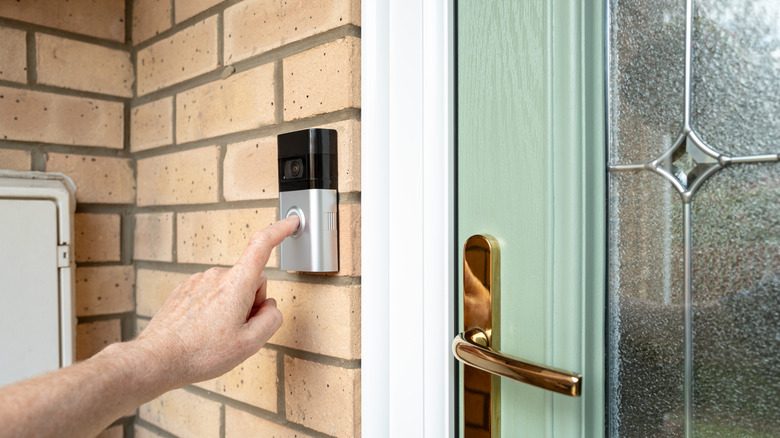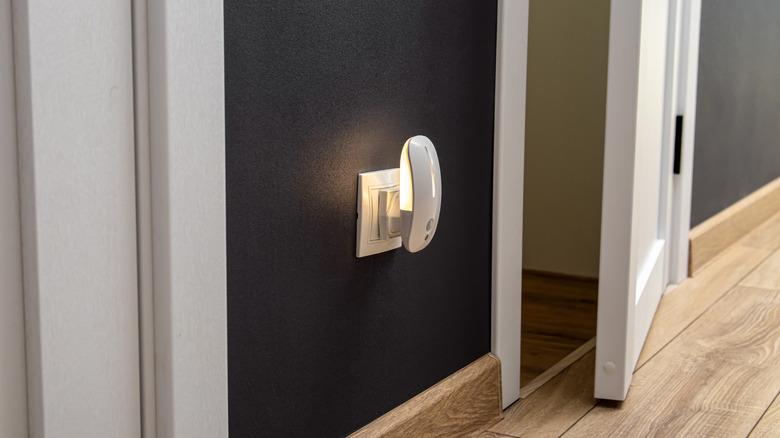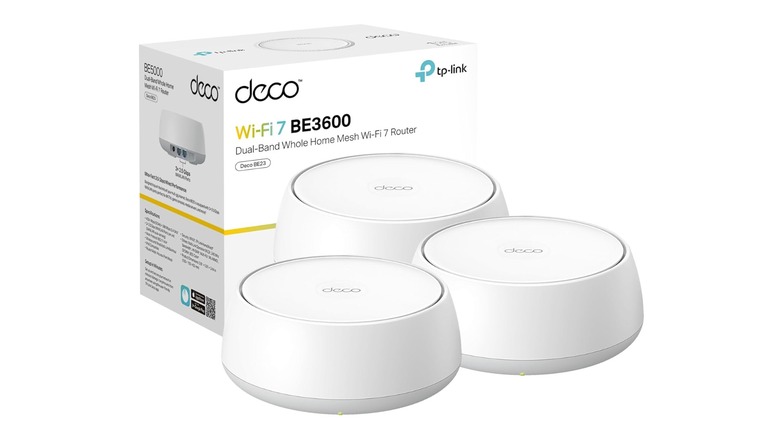 Nickbeer/Getty Images
Nickbeer/Getty Images
We may receive a commission on purchases made from links.
Each year, smart home device manufacturers bless us with an endless stream of new tech gadgets designed to make homes reach new heights of convenience. It's no wonder that there are so many gadgets that you may not even know exist, from wearable speakers, thin smart mirrors, to those designed to make your pets feel like kings. But with so many gadgets for all kinds of house problems, how do you choose the ones that move the needle for you and truly pay off?
In reality, there's no one single device that can change your life. After all, everyone's lifestyle, budget, and how comfortable their household is with technology make a difference. Because of this, it's always a good idea to pay attention to things like the common pain points you experience regularly. Apart from this, you can also observe the actions that take up a lot of time or mind space that you would prefer to automate. When you are aware of these things, you have a whole list of notes to help guide your decision-making and can choose the right tools.
However, if you don't know where to start, there are a few tech devices that are easy to set up, flexible with their use, or touch on so many applications that they're more likely to move the needle for the average person. If you're curious what little upgrades could be worth the time, effort, and money to set up, here are some to consider.
NFC Tags
 S__S/Shutterstock
S__S/Shutterstock
Because of how thin, light, and compact they are, NFC tags have pretty neat home applications and are one of the easiest ways to add tech without taking up too much space or attention. In some ways, the barely-there appearance makes it perfect for people who like having some of the advantages of technology, but prefer the old-school aesthetic of rooms without plugs or screens. In addition, they're relatively affordable and straightforward, so you don't have to do a ton of research or go through endless reviews to find the best one for you.
To start with, we've mentioned before how NFC tags are useful for changing lists, such as with storage boxes, as well as great for fulfilling simple tasks like helping people connect to your home's Wi-Fi without having to spell out the secure, but often annoyingly complicated password. For pet owners, they can also track how many times their family members have fed their dog or cleaned their cat's litter box. Additionally, they can be great for tracking whether or not you've taken your medication for the day.
That said, NFC tags do have some limitations, such as requiring a device that can work with them on hand, plus being physically close enough to them. If you need something that can work without your smartphone, you can consider a smart button instead. Although this does mean there's an added bulk and need to charge them, you can find smart buttons that let you control things remotely via an app.
Motion Sensors
 Svetlyachock/Shutterstock
Svetlyachock/Shutterstock
One of the easiest ways to bring our home into the future is by investing in a cocktail of motion sensors, which makes sure you utilize things when you need them and have them turned off when you don't. Unlike scheduled automations, motion sensors help you reduce the mental load of actions that you use frequently, but not at a predictable time. One of the most common ways people use motion sensors is through smart lighting, which turns on and off depending on whether someone is nearby. This is great for things like bathrooms or stairs, which you may need to use in the middle of the night. However, it is only really the tip of the iceberg.
Some of the other clever ways you can use motion sensors are to manage your HVAC system, such as turning off if it detects your windows or adjusting the temperature based on whether someone is in the room or not. But if you really want to take it a step further, there are plenty of other creative door sensor uses, such as notifying you if mail has arrived, your outdoor cat has returned after a day out, or even quietly taking note of visitors. In your garage, motion sensors can help alert you if any rodents (or your children) have found their way into your supplies. Lastly, they can be crucial to establishing routines, like turning your bedroom into a cozy zone at the end of a long day.
Automated window coverings
 Yoolax
Yoolax
For people who live in big homes with a ton of windows, it can take a surprising amount of time to open and close them each day. When you consider how natural lighting can impact your mood, it makes sense to invest in ways to bring it seamlessly into your space. And what better way to do it than with technology? In recent times, there are plenty of affordable automated window offerings that you can choose from.
Depending on your budget, the kind of window coverings you have, and how you want to control them, you can choose between smart blinds or smart curtain openers. While models can be expensive and introduce some risks due to their connected nature, we've mentioned before that one of the biggest smart blind pros is how it may be able to help you save money. Plus, you can use it to adjust the amount of sunlight your plants get, keep your room temperature stable, or even just set the mood for date night. When programmed properly, it can even play into a scene that simulates someone is at home when you're away, warding off potential burglars. And of course, it can add some convenience for people with limited mobility, like the elderly or wheelchair-bound individuals. Because of this, it's no wonder that smart window openers and smart blinds can be one of the most affordable smart devices that can add a touch of luxury as well as convenience to your home.
Smart Doorbells
 Primestock Photography/Shutterstock
Primestock Photography/Shutterstock
For particular users who are heavily invested in their safety, smart doorbells can be a valuable add-on in several ways. Apart from being able to see any potential visitors, it's also a convenient way to both track packages and monitor any possible instances of theft. But take note, how effective it is can be impacted by things like your Wi-Fi signal and remembering to charge its batteries if you'll be gone for extended periods. Not to mention, it's important to note that it's not meant to fully replace the viewing range of a proper security system that has cameras strategically placed.
These days, some of the popular smart doorbell brands like Ring haven't slowed down with developing 4K cameras and more futuristic features each year, especially with the onset of AI integration. For example, you can expect it to detect frequent faces, help find lost animals in your area, and make custom greetings for delivery personnel. Unsurprisingly, adding smart doorbells is one of the tech upgrades that are worth doing before you sell your house. After all, if you have the mind space to invest in security, you are making the subtle point that the things inside the house are also taken care of. But take note, you can expect some form of resistance, especially if your potential buyer has seen news of smart doorbells being hacked. Because of this, you'll want to take into consideration what kind of buyer will likely be looking at your particular property.
Wi-Fi mesh system
 TP-Link
TP-Link
While it's true that some smart devices don't require Wi-Fi, such as security cameras, lights, or thermostats, a significant number of devices available in the market can definitely benefit from it. Given this, it makes sense to invest in the underlying infrastructure that makes it possible. For people with smaller homes, investing in a good wireless router brand like NetGear, ASUS, or TP-Link might already do the job. However, homeowners who have a large or multi-story property may struggle with Wi-Fi dead zones, such as when there's a lot of interference from the materials used in the walls or furniture. For this reason, you might want to snag a Wi-Fi mesh router to be able to support your home's growing array of smart solutions.
Apart from supporting the function of smart home devices, Wi-Fi mesh systems are built to handle an influx of multiple users, especially if they all decide to connect to your Wi-Fi during a party. Lastly, they help reduce latency for things like gaming or streaming, which is ideal for people who work from home, content creators, or households who don't like waiting for their favorite show to buffer. That said, one of the big cons of Wi-Fi mesh systems is really their cost. So, if it doesn't really fit your budget, you can opt to try other methods to improve your connectivity, such as Wi-Fi extenders. In some cases, adjusting your Wi-Fi router's antennas or changing your router location can also make a difference.
